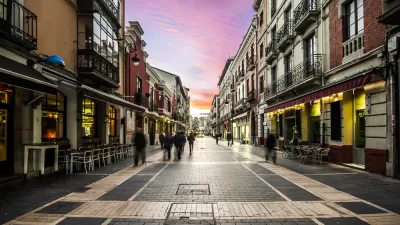From Portland to Minneapolis, cities across the America have been trying to catch up to Copenhagen's world-renowned bicycling infrastructure. With the recent opening of a bike superhighway, the Danish capital is leaving other cities in the dust.
The opening in April of the 11-mile-long cycle superhighway connecting Copenhagen to its western suburb of Albertslund, is the first of 26 routes intended to encourage long-distance bicycle commuting in the region around the Danish capital, reports Sally McGrane. In a city where half of the residents already bike to work or to school every day, the construction of the network of superhighways targets an area ripe for growth in bicycle use - suburban commuters, "most of whom use cars or public transportation to reach the city."
"While there is a good existing network of
bicycle pathways around Copenhagen," notes McGrane, "standards across municipalities can
be inconsistent, with some stretches having inadequate pavement,
lighting or winter maintenance, as well as unsafe intersections and
gaps." Hence, "For the superhighway project, Copenhagen and 21 local governments teamed
up to ensure that there were contiguous, standardized bike routes into
the capital across distances of up to 14 miles."
Although environmental and health benefits are stressed as key advantages of traveling by bike, "[Danish] commuters choose
bicycles because they are the fastest and most convenient transportation
option," writes McGrane. "'It's not because the Danes are more environmentally friendly,'
said Gil Penalosa, executive director of 8-80 Cities, a Canadian
organization that works to make cities healthier. 'It's not because they
eat something different at breakfast.'"
FULL STORY: Commuters Pedal to Work on Their Very Own Superhighway

Manufactured Crisis: Losing the Nation’s Largest Source of Unsubsidized Affordable Housing
Manufactured housing communities have long been an affordable housing option for millions of people living in the U.S., but that affordability is disappearing rapidly. How did we get here?

Americans May Be Stuck — But Why?
Americans are moving a lot less than they once did, and that is a problem. While Yoni Applebaum, in his highly-publicized article Stuck, gets the reasons badly wrong, it's still important to ask: why are we moving so much less than before?

Using Old Oil and Gas Wells for Green Energy Storage
Penn State researchers have found that repurposing abandoned oil and gas wells for geothermal-assisted compressed-air energy storage can boost efficiency, reduce environmental risks, and support clean energy and job transitions.

Minneapolis Bans Rent-Setting Software
Four cities have enacted restrictions on algorithmic software that can inflate rent costs.

Oakland to Add 244 New EV Chargers
Oakland plans to launch its new charging network at eight locations by the end of 2025.

Jane Goodall Inspires with Message of Hope, Resilience, and Environmental Action
Speaking in Pasadena, Jane Goodall offered a hopeful and inspirational message, urging global compassion, environmental responsibility, and the power of individual action to shape a better future.
Urban Design for Planners 1: Software Tools
This six-course series explores essential urban design concepts using open source software and equips planners with the tools they need to participate fully in the urban design process.
Planning for Universal Design
Learn the tools for implementing Universal Design in planning regulations.
Heyer Gruel & Associates PA
City of Moreno Valley
Institute for Housing and Urban Development Studies (IHS)
City of Grandview
Harvard GSD Executive Education
Salt Lake City
NYU Wagner Graduate School of Public Service
City of Cambridge, Maryland




























